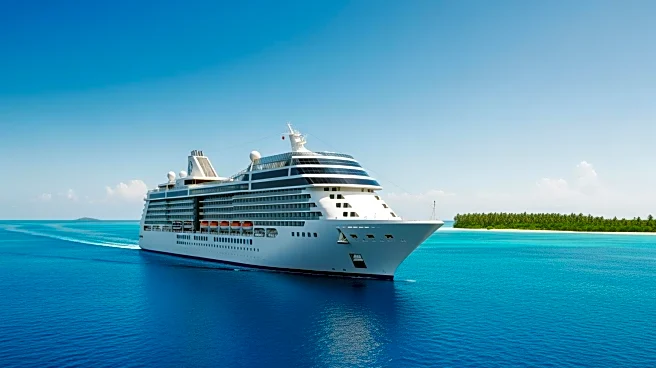What's Happening?
Norwegian Cruise Line Holdings (NCLH) has announced a record-breaking third-quarter revenue of $2.9 billion, marking a 5% increase from the previous year. This growth is attributed to higher capacity days
and robust demand for Caribbean itineraries, which are attracting more families to the Norwegian brand. The company, which includes Norwegian Cruise Line, Oceania Cruises, and Regent Seven Seas Cruises, is also benefiting from sustained demand for luxury travel. Despite the revenue increase, net income fell from $474.9 million last year to $419.3 million in 2025. Operating expenses rose slightly, and total debt stood at $14.5 billion. NCLH's strategic focus on luxury and ultra-luxury travel is expected to continue driving growth into 2026.
Why It's Important?
The record revenue highlights the resilience and appeal of the cruise industry, particularly in the luxury segment. Norwegian Cruise Line Holdings' success underscores the growing demand for premium travel experiences, which could influence other cruise operators to enhance their offerings. The company's focus on Caribbean itineraries and luxury travel positions it well to capitalize on these trends, potentially leading to increased market share. However, the rise in operating expenses and debt levels may pose challenges, requiring careful financial management to sustain growth. The broader impact on the U.S. travel industry includes potential boosts in tourism-related sectors, such as hospitality and local economies in popular cruise destinations.
What's Next?
Norwegian Cruise Line Holdings plans to continue its strategic focus on Caribbean itineraries and luxury travel, expecting load factors to exceed 2024 levels. The company aims to leverage its multi-brand portfolio to maintain strong performance across all segments. As the cruise industry recovers from pandemic-related disruptions, NCLH's approach may set a precedent for other operators seeking to attract affluent travelers. The ongoing demand for luxury cruises could lead to further investments in fleet upgrades and enhanced services, potentially driving innovation and competition within the industry.











